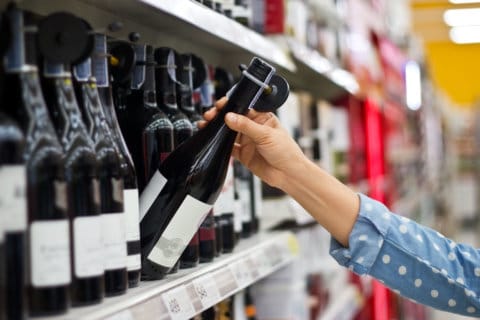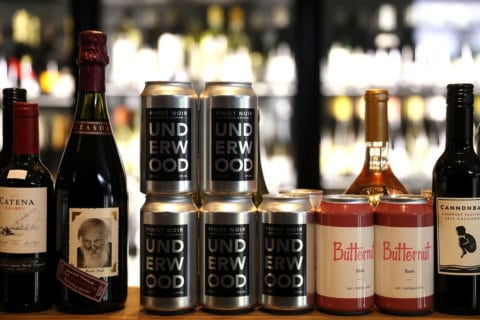“The first duty of wine is to be red … the second duty is to be a Burgundy.”
For those of you who subscribe to the aforementioned theory of noted wine aficionado Harry Waugh, you’ll be pleased to find out that enjoying red Burgundies no longer requires a line of credit and a numbered Swiss bank account.
On the contrary, the number of quality red Burgundies currently retailing for under $30 is on the rise, thanks, in large part, to the improvement in winemaking techniques and a consolidation of plots in the famed vineyards of the legendary wine region.
From around the sixth century until the French Revolution, the vineyards were owned — and protected — by the church. Monasteries in the region made some of the finest wines in the world and profited handsomely from their sales.
After the revolution, the vineyards were divided up among the people who worked the land. The inheritance by successive generations led to the partitioning of the vineyards into tiny lots. Today, some parcels are no larger than a single row in a vineyard.
This fragmentation has led to some of the most confusing regional classifications in all of winedom.
Because there are so many different soil compositions located in the region — and so many owners in each region — classifications have become much more focused on a particular plot of land than say, Bordeaux, where classifications are awarded to individual châteaux. Therefore, it is a specific subregion or individual vineyard, not the wine’s producer, that carries a given classification.
And the classifications themselves can be a little confusing. Typically, there are four classifications ranging from lowest to highest in quality. They begin with the ordinary Burgone, then value-oriented Village, next is special occasion Premier Cru and, finally, the grand dame, Grand Cru.
But, take note: Many Burgone wines can be pretty tasty, and more than a few Premier Cru are now affordable.
The wine region of Burgundy starts at Dijon and runs southward, almost to the city of Lyon. The main Appellation d’Origine Controlee Bourgogne wine regions in Burgundy proper are the contiguous Côte de Nuits and Côte de Beaune, which together make up the Côte d’Or (gold coast) in the north and Côte Chalonnaise to the south. Also part of the AOC Bourgogne, although not physically connected to the above regions, are Beaujolais (home to the Gammay grape), Chablis (known for its steely/flinty chardonnay) and Mâcon (mainly dedicated to chardonnay).
Wine author Jancis Robinson once pointed out, “There are no shortcuts to understanding the region of Burgundy. If you want to become a Burgundy expert, be prepared to memorize 1,000 names … and expect to get lost in a maze of appellations. In addition, get ready to part with a good chunk of change; Burgundy wines are expensive.”
Though it used to be true that prices for these wines were directly proportional to their classification, there is a growing selection of remarkable Burgundy wines from many noted vineyards that can be had without digging into your child’s college fund or your retirement account.
After all, if wine’s first duty is to be red, it’s second duty is to be a Burgundy under $30.
Legendary Burgundy producer Louis Jadot definitely knows how to bottle value. The 2015 Louis Jadot Bourgogne Pinot Noir offers up scents of bright, ripe cherries that carry through onto a satiny-textured body, where it is joined along the way by notes of black cherries, raspberries and a touch of graphite. The bright tannins provide a mouth-coating finish that would be a perfect match for tuna, either grilled or tartare. $15
Five generations, 90 appellations covering 175 acres, and over 135 years of producing and selling great Burgundy wines add up to a well-aged family business. It also means that you can find a lot to love in the 2015 Joseph Drouhin Laforet Pinot Noir. Classic scents of perfumed red raspberries and wild strawberries on the nose are echoed on the palate, where they are joined by elegant notes of bright cherries and strawberries. The seductive finish ends long and clean thanks to a remarkable backbone of tannins. Perfect with duck. $18
Domaine Faiveley combines the principles of modern winemaking methods with the time-honored traditions that have been practiced for centuries within their cellars. Each terroir and each vintage benefits from special attention that makes the cuvées unique. Fruit for the 2016 Domaine Faiveley Bourgogne Pinot Noir is sourced from three different appellations in the Burgundy region. Intriguing aromas of baking spices and ripe blueberries fill in the bouquet. The fine tannins and modest acidity hold up the abundant flavors of red cherries, raspberries and cranberries all the way through the medium finish. A nice match with teriyaki salmon. $20
Last week, we talked about expat Alex Gambal, who left the D.C. area for the vineyards of Burgundy. Well, Blair Pethel is another American who gave up a career in journalism to make wine as his creative outlet. The 2015 Domaine Dublere Bourgogne Rouge is a new wine for Pethel with the 2015 vintage. It is delightfully approachable and fruit-forward, offering charming flavors of red cherry, raspberries and notes of red plums on the plush palate. Its enduring finish is built on a medium-bodied frame that would do well with roast leg of veal. It is a stunning value for an entry-level wine from a great vintage. $30






